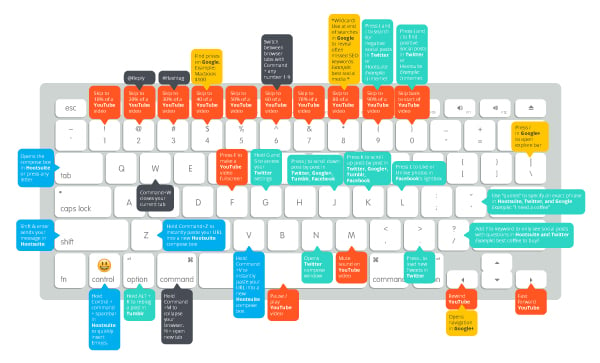Rocks downloading
Mac Keyboard Help
- Mac Keyboard Lag
- Mac Keyboard On Pc
- Keyboard For Mac Mini
- Wireless Keyboards For Mac
- Use Mac Keyboard On Pc
To open the On-Screen Keyboard click on the Start button, click All Programs, click Accessories, click Ease of Access, and then click the On-Screen Keyboard program. By default the on-screen keyboard will show up without a number pad. To display the keypad, click options and check the “Turn on numeric key pad” option then click ok. 30 keyboard shortcuts Mac users need to know This collection of keyboard shortcuts for macOS can help users get the most from their iMacs, MacBook Pro and MacBook laptops.
A Help key, found in the shape of a dedicated key explicitly labeled Help, or as another key, typically one of the function keys, on a computer keyboard, is a key which, when pressed, produces information on the screen/display to aid the user in his/her current task, such as using a specific function in an application program.
In the case of a non-dedicated Help key, the location of the key will sometimes vary between different software packages. Most common in computer history, however, is the development of a de facto Help key location for each brand/family of computer, exemplified by the use of F1 on IBM compatible PCs.
Mac Keyboard Lag
Apple keyboards[edit]
The standard help key on the Apple IIe and Apple III series computers is either OPEN-APPLE-? or SOLID-APPLE-? ... The standard help key on the Apple II and Apple II+, where practical, is a question mark or slash, or else ESCAPE? or ESCAPE/.
On a full-sized Apple keyboard, the help key was labelled simply as Help, located to the left of the Home. Where IBM compatible PC keyboards had the Insert, Apple keyboards had the help key instead. As of 2007, new Apple keyboards do not have a help key. In its place, a full-sized Apple keyboard has a Fn instead. Instead of a mechanical help key, the menu bar for most applications contain a Help menu as a matter of convention.
Mac Keyboard On Pc
Commodore and Amiga keyboards[edit]
The Commodore 128 had a Help key in the second block of top row keys. Amiga keyboards had a Help key, labelled as such, above the arrow keys on the keyboard, and next to a Del key (where the InsertHomePg Up cluster is on a standard PC keyboard).
Atari keyboards[edit]
The keyboards of the Atari 16- and 32-bit computers had a Help key above the arrow keys on the keyboard. Atari 8-bit XL and XE series keyboards had dedicated Help keys, but in the group of differently-styled system keys separated from the rest of the keyboard.
Sun Microsystems (Oracle)[edit]
Keyboard For Mac Mini
Most of the Sun Microsystems keyboards have a dedicate 'Help' key in the left top corner (left from the 'Esc' key above block of 10 (Stop,Again,Props,Undo,Front,Copy,Open,Paste,Find,Cut) extra keys.[2]
References[edit]
- ^Meyers, Joe; Tognazzini, Bruce (1982). Apple IIe Design Guidelines(PDF). Apple Computer. pp. 39–40. Archived from the original(PDF) on 2015-09-23. Retrieved 2014-03-11.
- ^'manual'(PDF). pp. chapter 7 'image of Type-6 keyboard'. Archived from the original(PDF) on March 4, 2016. Retrieved September 25, 2011.
Wireless Keyboards For Mac

Use Mac Keyboard On Pc
would probably not come on; unless the components were from different regions.
It would appear the switching device interferes with the automatic recognition factor.
And if someone else has a better theory or can check this premise further, welcome!
When no alternative keyboard is attached, the option key suggested in Apple Help
(in computer's finder) no longer exists; so to test instructions given there are worthless.
According to Apple Help, in Tiger 10.4.11:
'When you connect a keyboard that is not immediately recognized, the Keyboard Setup
Assistant automatically opens so you can specify the keyboard type (ANSI, JIS, or ISO).
There are three keyboard types that Mac OS X recognizes: ISO (Europe), JIS (Japan), and
ANSI. The ANSI keyboard is a standard 101-key layout widely used in the US, North America,
and many other parts of the world.
If you are having trouble with your keyboard, you may need to specify the type manually. You
can use Keyboard & Mouse preferences to open the Keyboard Setup Assistant and specify the
keyboard type....'
{There is no suggestion in the Help database on how to ignore suggestions of the Keyboard Setup
Assistantwhen it is prompted to open to allow the user a choice in manually chosing a keyboard type.}
Perhaps the USB switching device you have in use is not supportive of OS X or
has a defect in firmware, etc? There may be some way to address the concern
from a command line or single user level; below the GUI.
Good luck & happy computing! 🙂